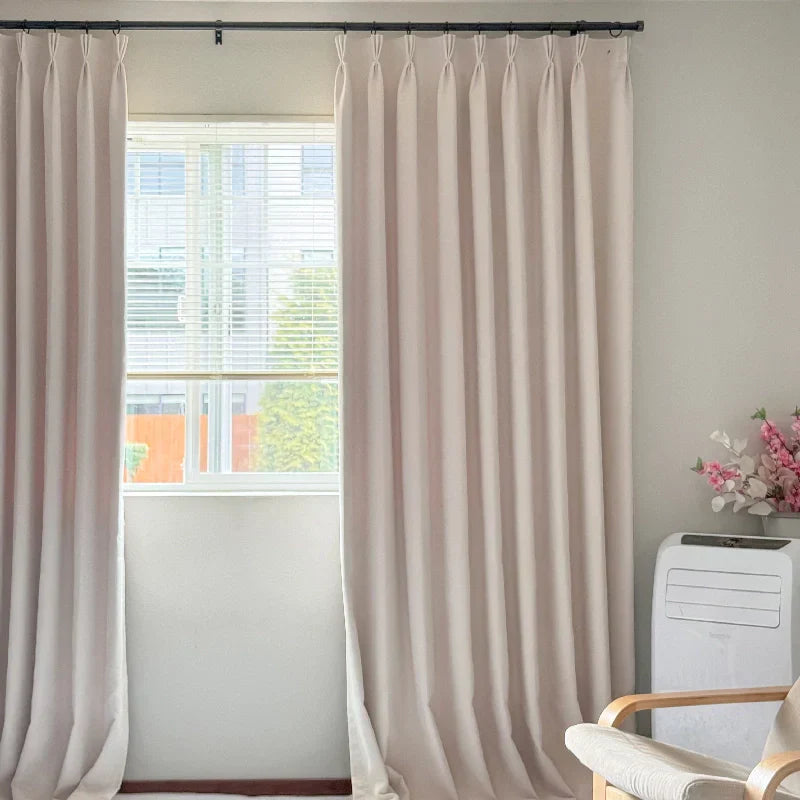
Best Fabric for Blackout Curtains: Choosing the Perfect Material for Your Home
Blackout curtains are essential in American homes, especially for bedrooms, nurseries, and home theaters, where controlling light is crucial. Beyond privacy and light control, they also help regulate temperature, reduce energy costs, and minimize noise. However, not all fabrics perform equally, so choosing the right one is key. Here, we delve deeper into the best fabrics for blackout curtains, considering performance, aesthetics, maintenance, and suitability for the American market.
1. Polyester
Polyester remains one of America's most popular choices due to its resilience and affordability. Its tightly woven fibers naturally limit light penetration, particularly when enhanced with a blackout liner. Polyester is perfect for busy households, including family rooms and children's rooms, where durability and easy maintenance matter.
Pros:
-
Highly durable and resistant to wear
-
Easy to clean, machine washable
-
Resistant to shrinking, stretching, and fading
-
Cost-effective and widely available
Cons:
-
May retain heat, potentially less comfortable in warmer climates
-
Less breathable than natural fibers
2. Velvet
Velvet curtains are synonymous with luxury and elegance, popular in upscale homes across the United States. The thick, plush texture not only blocks light exceptionally well but also provides superior sound absorption, creating a cozy atmosphere perfect for bedrooms, home theaters, and formal living areas.
Pros:
-
Superior blackout performance due to dense weave
-
Luxurious and sophisticated appearance
-
Excellent thermal insulation and soundproofing
Cons:
-
Higher cost compared to other fabrics
-
Requires dry cleaning or careful spot cleaning to maintain appearance
-
Heavy, requiring sturdy curtain rods and installation
3. Cotton
Cotton is beloved for its natural feel and versatility, fitting beautifully in traditional, farmhouse, and contemporary American interiors. While cotton alone doesn't offer full blackout capabilities, it's commonly paired with special blackout linings for improved performance, especially in bedrooms and guest rooms.
Pros:
-
Soft, natural, and breathable fabric
-
Easy maintenance, often machine washable
-
Widely available in various patterns and colors suitable for diverse decor styles
Cons:
-
May fade over time if exposed to direct sunlight without adequate lining
-
Typically requires additional blackout lining for complete effectiveness
4. Linen
Linen curtains offer an airy and chic aesthetic, highly favored in coastal, modern farmhouse, and minimalist interior designs popular in regions like California, Florida, and New England. While linen itself is translucent, pairing it with blackout lining ensures both style and functionality.
Pros:
-
Eco-friendly, naturally sourced material
-
Lightweight and elegant texture
-
Ideal for casual, contemporary home settings
Cons:
-
Easily wrinkles, requiring frequent ironing or steaming
-
Needs lining to achieve blackout functionality fully
-
Can be more expensive compared to cotton or polyester
5. Silk
Silk curtains are the epitome of luxury, often seen in upscale and formal American homes, such as historic townhouses and elegant suburban residences. Despite their delicate nature, silk curtains can be effective blackout solutions when coupled with specialized linings, preserving the fabric from UV damage and enhancing insulation.
Pros:
-
Extremely elegant, adds significant aesthetic value
-
Lightweight and beautifully draped appearance
Cons:
-
High cost, often making it a premium choice
-
Sensitive to sunlight, requiring robust lining
-
Dry-clean only, demanding meticulous care
Factors to Consider When Selecting Blackout Curtain Fabrics:
-
Room Usage: Opt for velvet or polyester in bedrooms and media rooms, while linen and silk suit decorative, low-traffic areas.
-
Maintenance Needs: Polyester and cotton offer easier maintenance, ideal for busy American households.
-
Regional Climate: Polyester and velvet provide better insulation in colder regions, whereas linen and cotton work well in warmer climates.
-
Budget: Polyester and cotton are budget-friendly; silk and velvet represent higher-end investments.
Choosing the right fabric for blackout curtains involves balancing practical functionality with style and maintenance needs. By considering these detailed insights, you can ensure your curtains not only enhance your home's aesthetics but also meet your lifestyle requirements perfectly.










